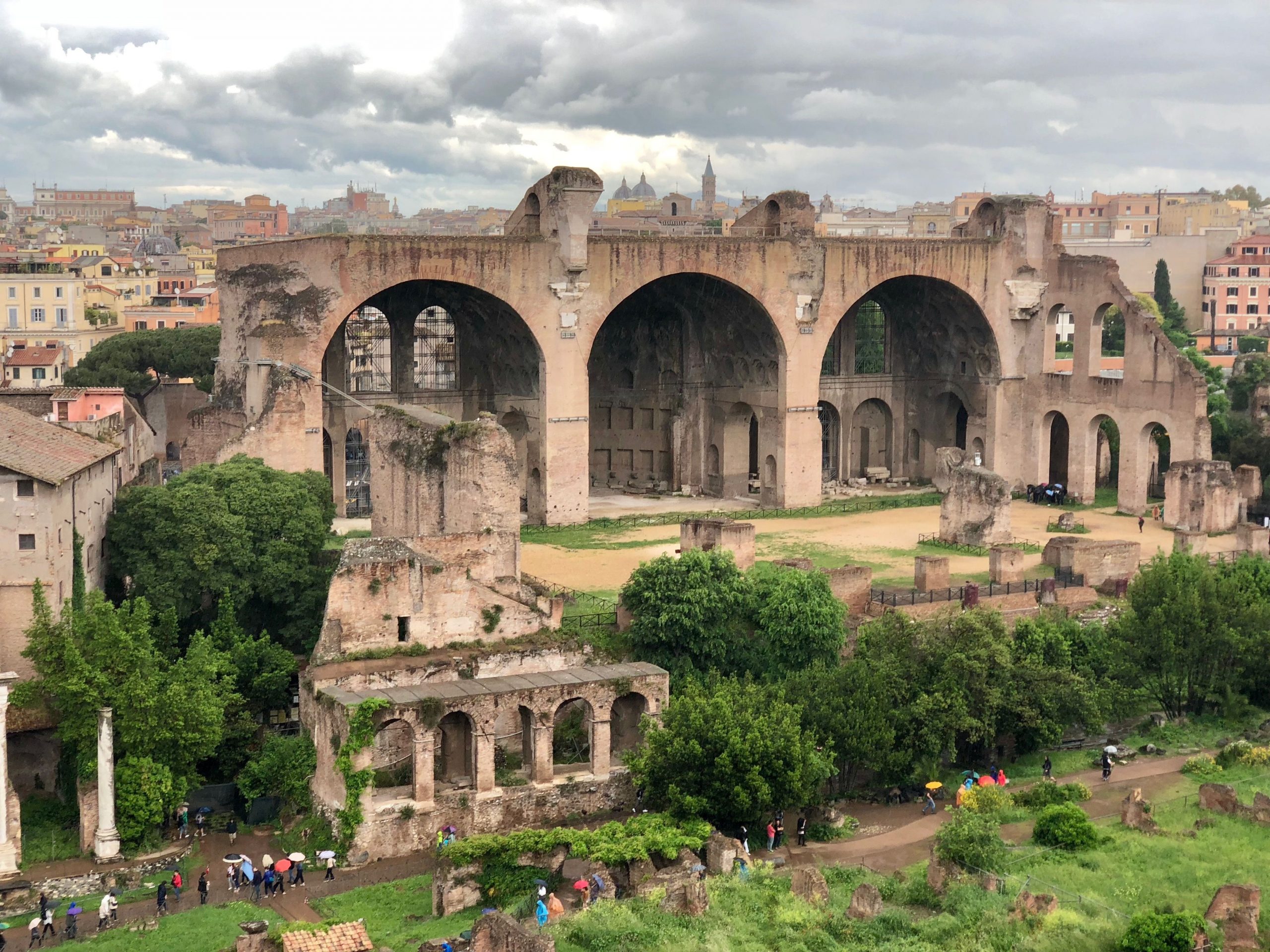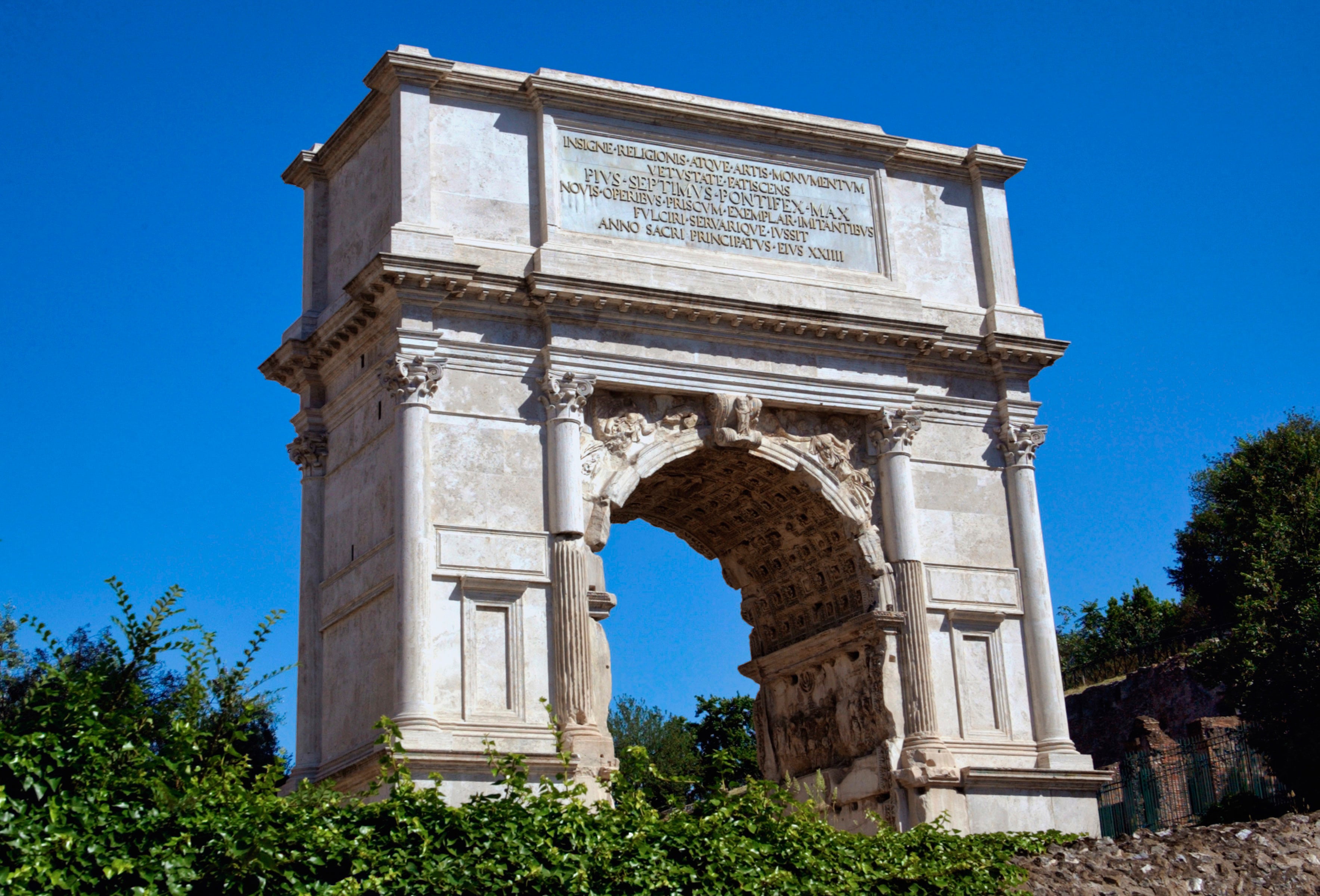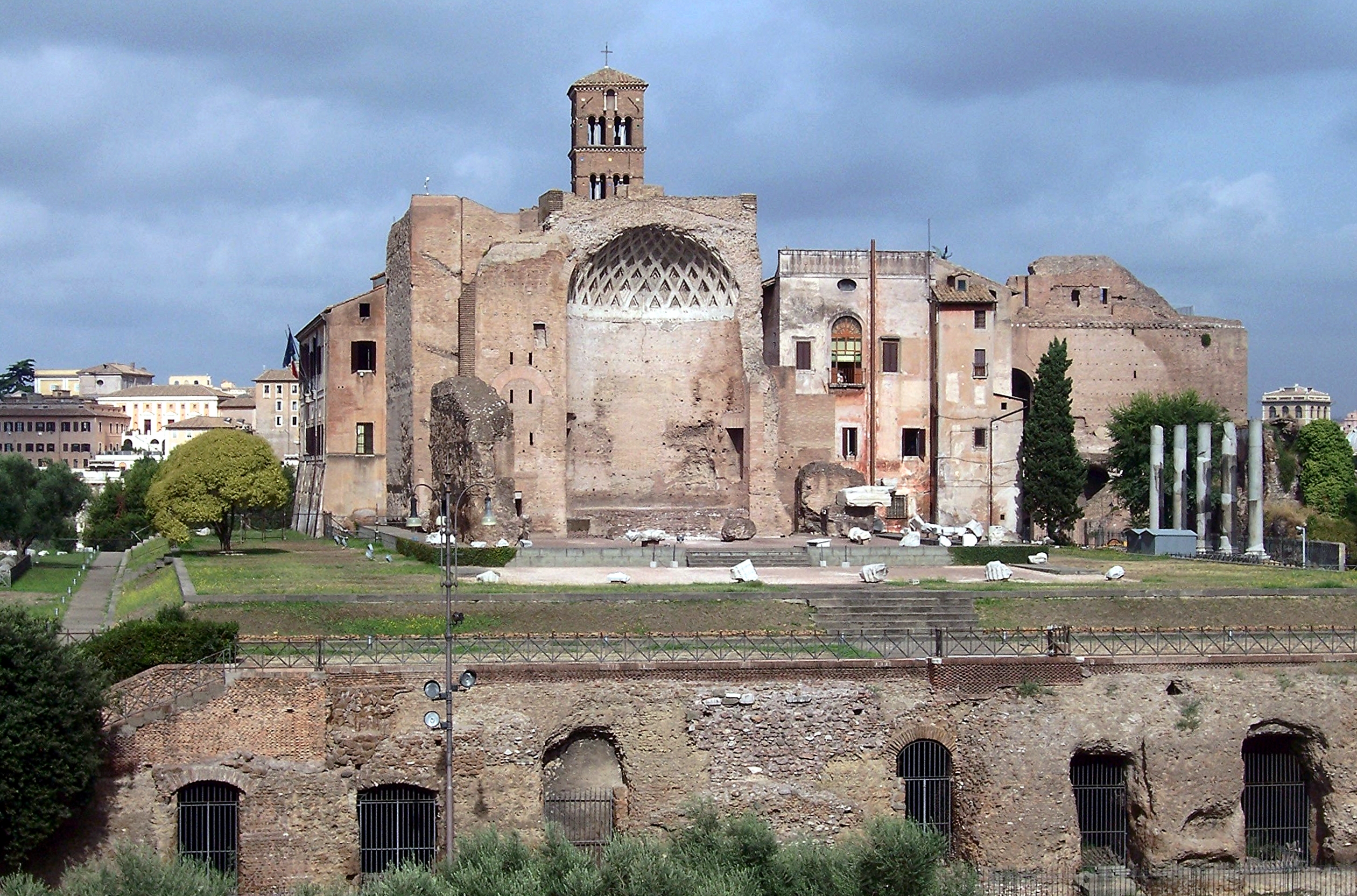WHAT IS THE LAPIS NIGER?
The area in front of the Curia was once a paved area called the Comitium which by the 3rd century BC had an arena shaped seating area, the tribunal, rostra and foreigner’s gallery. These political buildings disappeared as Rome became an empire, but one curious ‘ill-omened area’ remains. In front of the Arch of Septimius Severus, there is an irregular patch of bluish-grey limestone slabs which are lower than the surrounding travertine (marked off by a metal railing today). This is the Lapis Niger, or Black Stone.
What is intriguing is what lies beneath! Excavations unearthed three monuments; an inscribed tufa block from the 6th century, an altar from the 4th century and a column base from the 3rd century BC. These were all buried in the 1st century BC when the area was paved over and marked with the black stone.
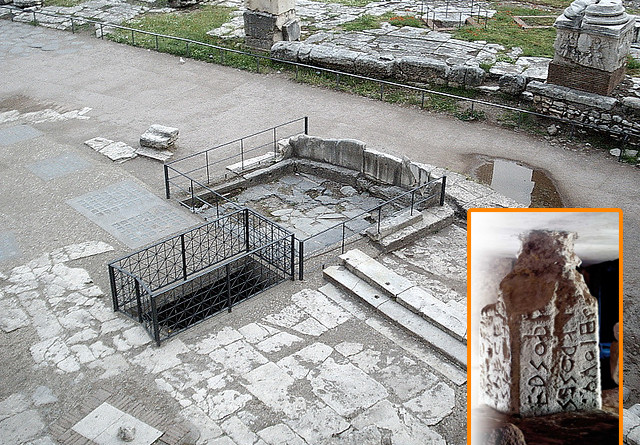
The 6th century inscription is in very early Latin and scholars are still baffled as to the exact words; it seems to be the rules for a religious rite where a king performs a ceremony using yoked animals. The Romans themselves, probably couldn’t read it either, but by the late Republic it was believed to be the grave of an early king perhaps Romulus, or connected it with the God Vulcan, in which case it was the site of Romulus’ assassination. Whatever it was, the ancients clearly believed it was a bad place!
THE GATEWAY TO HELL LOCATED INSIDE THE ROMAN FORUM
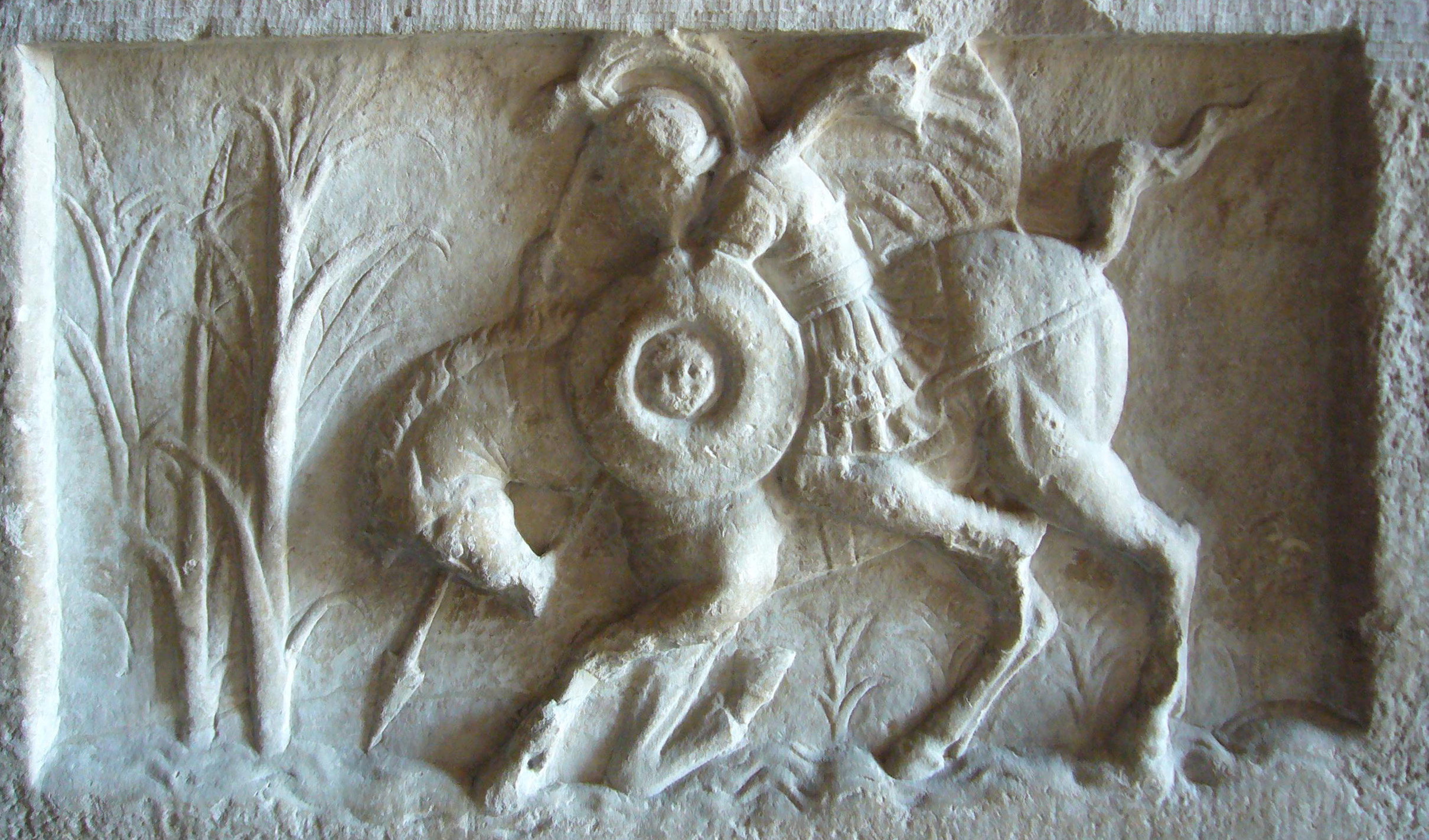
In the once paved rectangular square in the centre of the Roman Forum – there is a curious area known as the Lacus Curtius or Curtius’ pool. It is a trapezoidal area once surrounded by a parapet wall. As the street level rose over time, this area seems to have been left at a much earlier level which has a hole at the centre. Already by the 2nd Century BC the Romans themselves were unsure of what this pool might have been, but by Augustus’ day people threw coins into it for good luck; it clearly continued to be viewed as sacred.
Who was Curtius? One story tells that he was a Sabine Knight who fell into a marsh when he was fighting Romulus
. Another claims he was a Roman Knight who sacrificed himself and his horse by leaping into a chasm that had appeared in the Roman Forum (see the relief found nearby and on display in the area). Another suggestion is that he was Gaius Curtius, consul in 445 BC who consecrated the site after it was hit by lightning.
SANTA MARIA ANTIQUA: THE OLDEST SURVIVING CHRISTIAN CHURCH IN THE ROMAN FORUM
At the base of the Palatine hill sits a building that was once part of a great hall connected to Domitian’s monumental ramp up to his palace. Part of the hall was converted into what is called today Santa Maria Antiqua, it is one of the few sites in Rome where we can see Byzantine Christian art. This building is uniquely decorated with extraordinary early-Christian paintings dating back to the 560s AD. The decorations include Old testament stories of Jacob and Joseph, images of the Saints Agnes and Cecilia and the so-called Oratory of the Forty Martyrs depicting 40 Christian soldiers who were martyred in Armenia in 303 AD. Later abandoned (probably after the earthquake of 847), in its short life it was richly endowed with marble and mosaic pavement and more rare frescoes in the 8th century.
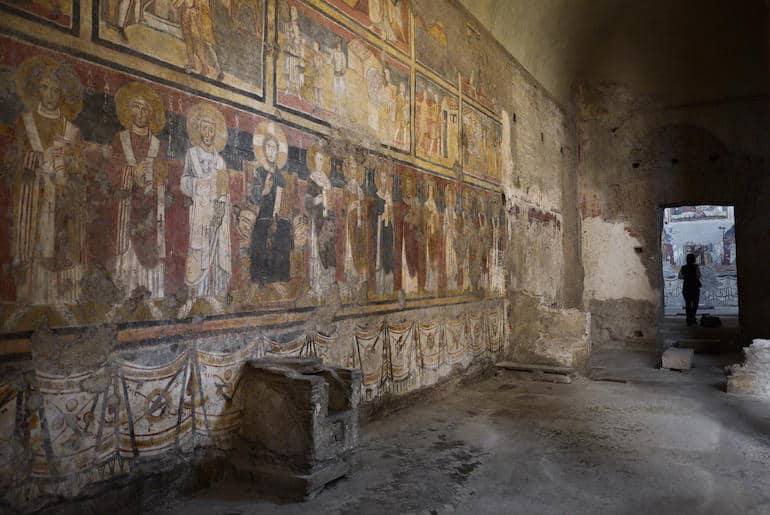
The Church of Santa Maria Antiqua has only recently re-opened after lengthy restoration and should not be missed for the incredible early-Christian artwork on display. (Please note: the church is only accessible with Full Experience or Forum Super Pass tickets until it reaches capacity).
WHERE WAS CAESAR ASSASSINATED? FACT AND FICTION
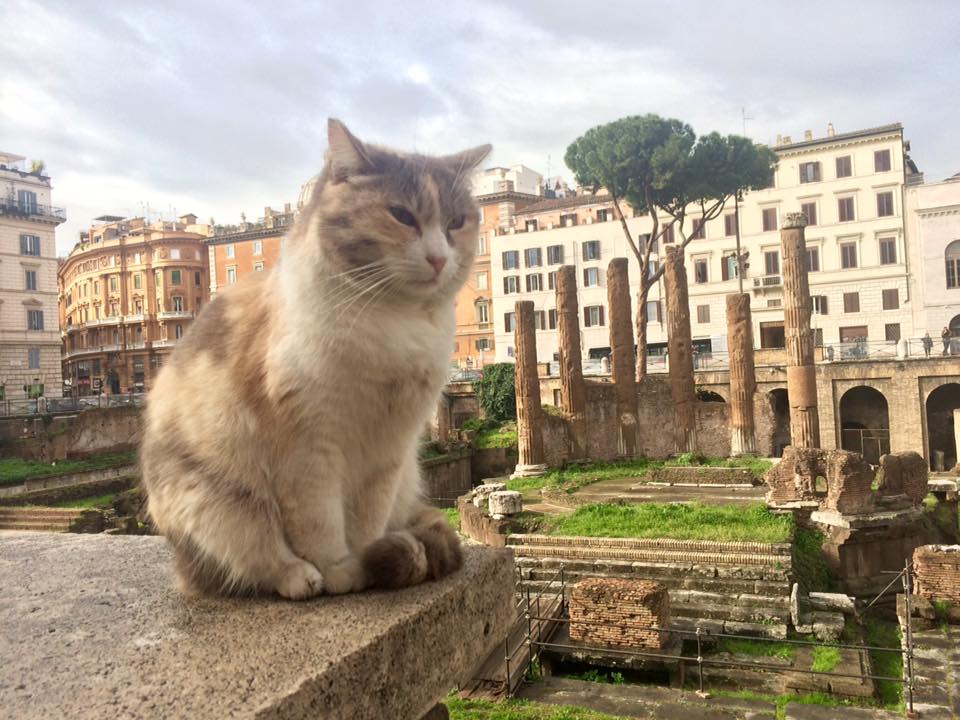
Julius Caesar is by far Ancient Rome’s most popular historical figure and many visitors ask where he died and where his remains are. Caesar was assassinated on the Ides of March (15th) 44BC as he attended a meeting of the Senate, stabbed 23 times by friends and colleagues. Many assume this happened in the Roman Forum. This is an easy mistake, considering he was killed at a meeting of the senate – usually held in a building called the Curia (senate house) in the forum.
At the time of Caesar’s death, this building was being restored (by Caesar) because of fire damage (it would be renamed Curia Julia). Meanwhile, the meeting of the senators was held at the southern end of a Portico attached to the Theatre of Pompey on the Campus Martius.
Caesar’s state funeral took place in the Forum, where he was ‘impromptu’ cremated (against religious law) by the grieving crowd. An altar and later a temple were erected in his name, but Caesar was not actually killed inside the Roman Forum.
The site of his assassination lies under Via di Torre Argentina today, very close to the Republican temples found in Largo Argentina. Today the closest we can get to the site of his assassination is to descend into the cat sanctuary of Largo Argentina!
